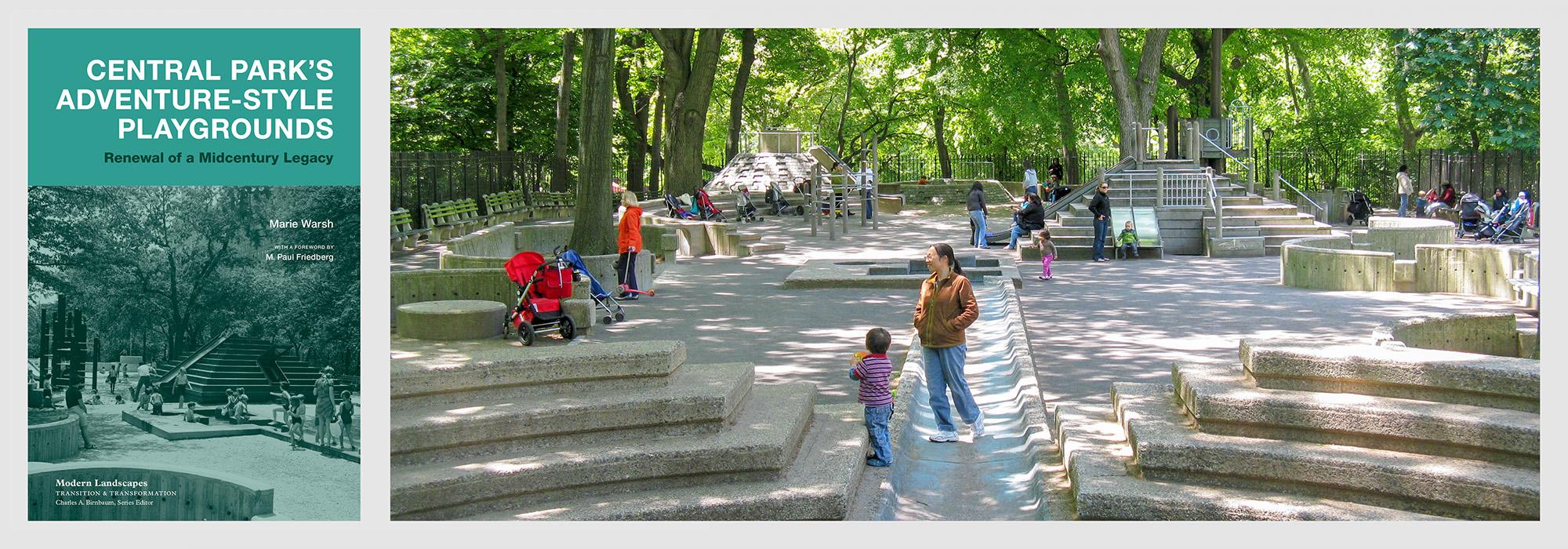Central Park’s Adventure-Style Playgrounds: Renewal of a Midcentury Legacy
Written by Marie Warsh, director of preservation planning with the Central Park Conservancy, Central Park’s Adventure-Style Playgrounds is the third volume in The Cultural Landscape Foundation’s series Modern Landscapes: Transition & Transformation, edited by Charles A. Birnbaum. Published by LSU Press, this latest volume documents the design trends, social motivations, and public engagement that made Central Park a kind of laboratory for playground design in the 1960s and 1970s.
Before World War II, playgrounds were often sterile, fenced, paved, and sparsely furnished places—custodial cages for kids—rather than the stimulating environments that the midcentury public demanded. Pressure mounted for an alternative approach, ultimately resulting in the “playground revolution,” and Central Park became a testing ground, with a range of interesting, innovative, and creative play spaces that broke the mold. Comprehensively designed environments with interconnected forms, such as pyramids, mounds, and steps, and basic materials, such as water and sand, encouraged new levels of creativity and interaction. These designed landscapes were visually attractive to adults and engaging to children, forming a typology that is commonly called adventure-style playgrounds. By the end of the 1970s, a total of ten of Central Park’s twenty-two existing playgrounds—equipment-filled lots dating to the 1930s—had been transformed according to the new ideals of design.
Over time, the Modernist playgrounds declined, and in the late 1990s the Central Park Conservancy began to update them, responding in large measure to a grassroots movement aimed at preserving them. Warsh’s book offers a broad perspective on this effort, revealing patterns and relationships that provide new insight into the playgrounds’ significance and enduring relevance, and connecting them to the history and legacy of other playgrounds in New York, as well as the cultural context of Central Park. The Conservancy, established in 1980, is typically known for its work restoring and managing the park’s iconic landscapes designed by Frederick Law Olmsted, Sr., and Calvert Vaux; updating these rare postwar playgrounds marked a departure. Warsh’s is the first book to discuss in comprehensive detail this more modern layer of the park’s design, highlighting the debates over how to uphold its original purpose while accommodating new uses.
The two previous volumes in the Modern Landscapes: Transition & Transformation series are Lawrence Halprin’s Skyline Park (2012) and Mellon Square: Discovering a Modern Masterpiece (2014), which, in 2015, jointly won an Honor Award in the Communications category from the American Society of Landscape Architects.
Contributors: Written by Marie Warsh, with a foreword by M. Paul Friedberg and an essay by Charles A. Birnbaum.
Published by LSU Press and now available for purchase.



